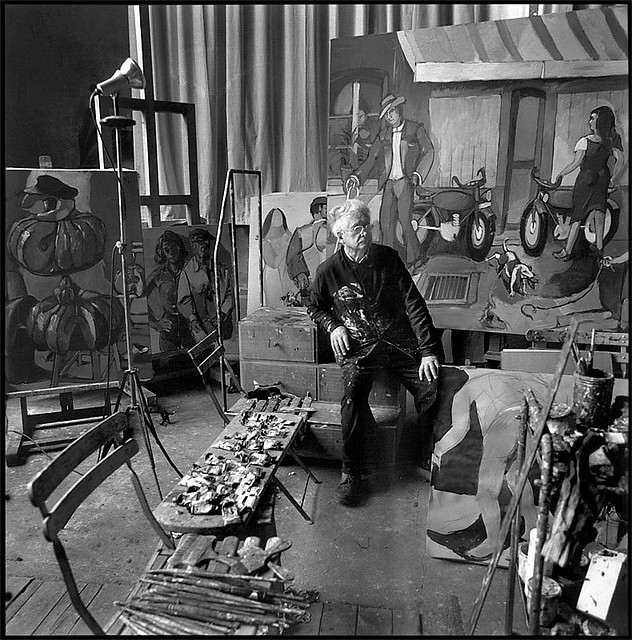Jean Hélion

Jean Hélion, born on April 21, 1904, in Couterne, Orne, France, is famous for his significant contributions to both abstract and figurative painting. His journey through various artistic movements and his return to figuration make him a unique figure in 20th-century art. Hélion's artistic career is marked by his relentless pursuit of innovation and his ability to bridge diverse styles and ideologies.
Hélion's early years were shaped by his engineering studies, which he eventually abandoned in favor of art. In the late 1920s, he moved to Paris, where he immersed himself in the vibrant art scene. Influenced by the works of Cubist artists and the emerging abstract movement, Hélion began experimenting with geometric abstraction. By 1930, he became a founding member of the Abstraction-Création group, alongside artists such as Theo van Doesburg and Piet Mondrian. This group aimed to promote non-figurative art and played a crucial role in establishing abstract art in Europe.
Hélion's abstract works from the 1930s are characterized by their rigorous geometric forms and bold use of color. His paintings often feature interlocking shapes and dynamic compositions that reflect his background in engineering and a keen sense of structure. Works such as "Abstract Composition" and "Study for a Composition" illustrate his mastery of geometric abstraction, where simple forms and crisp lines combine to create dynamic and balanced compositions.
However, by the late 1930s, Hélion began to question the limits of pure abstraction. He felt the need to return to a form of figurative representation that could better express the complexity of human experience. This turning point marked the beginning of a new phase in his career, characterized by a return to figuration and an exploration of representing reality.
During World War II, Hélion served in the French army, an experience that would deeply influence his later artistic work. During this period, he made numerous sketches and drawings, capturing scenes of soldiers' daily life and landscapes torn by war. These works reveal a renewed interest in figurative representation and an increased sensitivity to the human aspects of existence.
After the war, Hélion continued his exploration of figuration, producing works that reflect his unique vision of the world. His figurative paintings from the 1940s and 1950s explore a variety of subjects, ranging from still lifes and urban landscapes to portraits and scenes of daily life. His figurative style is characterized by an expressive use of color and dynamic composition that reflects his interest in modern life and human interactions.
In the following years, Hélion continued to expand his artistic repertoire, exploring new techniques and approaches. His work evolved constantly, oscillating between abstraction and figuration, while maintaining thematic and stylistic coherence. His paintings from the 1960s and 1970s reveal a deep reflection on the human condition, exploring themes such as alienation, loneliness, and the relationship between the individual and society.
One of the most striking features of Hélion's work is his ability to merge abstract and figurative elements to create complex and evocative compositions. His paintings, such as "The Large Window," "The Green Table," and "The Travelers," showcase his mastery of color, form, and light to express deep emotions and ideas.
In addition to his career as a painter, Hélion was also a prolific writer and art theorist. His essays, which were widely published and translated, had a significant influence on 20th-century art theory. His writings reflect his complex thinking about art and life, exploring questions such as the nature of creativity, the role of the artist in society, and the tensions between abstraction and figuration.
Throughout his career, Hélion received numerous awards and honors for his artistic work. His works have been widely exhibited worldwide, and he is now recognized as one of the most important artists of the 20th century. His artistic legacy endures, inspiring future generations of artists to push the boundaries of art and explore new forms of expression. Jean Hélion passed away on October 27, 1987, leaving behind a rich and diverse body of work that continues to fascinate and inspire art enthusiasts around the world.